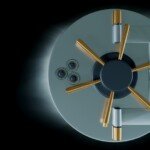Shaping the Future: How CNC Pipe Bending Technology Innovates Metal Manufacturing
In the complex world of metal manufacturing, the ability to bend pipes and pipes accurately and effectively is fundamental, affecting the aerospace and automotive industries to HVAC and custom building structures. For decades, this process requires high skills, many settings, and often leads to expensive errors and scrap. But the emergence and continuous development Computer Numerical Control (CNC) Pipe Bending Technology This landscape is being transformed, providing unprecedented precision, flexibility and efficiency. At Greatlight, we use advanced five-axis CNC machining to solve complex manufacturing challenges, which we see as key tools for our customers and the industry as a whole.
Beyond Simple Curves: The Heart of the CNC Bending Revolution
CNC pipe benders use programmable computer controls to manipulate the bending process with excellent accuracy. Gone are the pure mechanical stops and the operator’s feeling. Modern systems combine complex servo motors, hydraulic or electric drives, and increasingly powerful controller software. But the real excitement is Innovation Push the boundaries:
-
Advanced multi-axis control and hybrid drive system: The transfer to more axes of motion (much beyond simple rotation and bending) makes complex composite bends in a single setup. Think of bending the tube around multiple planes simultaneously, creating complex 3D shapes without continuous repositioning. Electric servo drives provide high speed and positioning accuracy for light to moderate operation, while advanced electrical humidity systems provide the immense power required for large diameter tubes, often with excellent energy efficiency and cleaner operation.
-
Real-time monitoring and adaptive control: Sensor technology has been deeply embedded. Loading the battery monitors pressure during bending. Laser scanners or advanced cameras measure actual tube geometry period Bending cycle. This data will be returned to the CNC controller, which uses Adaptive algorithm Compensate immediately for material changes (such as rebound or inconsistent wall thickness) or minor tool wear. This ensures Part One It’s right, and every subsequent part matches it perfectly.
-
Integrated simulation and zero-test bending: The powerful software suite allows manufacturers to design bends in a 3D CAD/CAM environment, digitally simulate the entire bend process, and automatically generate the best machine code. Integrated collision detection prevents expensive crashes. Crucially, the simulation can predict rebound based on the material library, often eliminating the need for physical test bends and adjustment iterations, thus greatly reducing set-up time and material waste.
-
IoT connectivity and predictive maintenance: Modern CNC benders are becoming “smart” machines. Integrated networks (Industrial IoT) collect large amounts of performance data – cycle time, motor load, hydraulics, temperature, error logs. This allows remote monitoring, detailed production analysis, and is crucial. Predictive maintenance. Issues such as pump wear or bearing fatigue can be expected and arranged for repairs to maximize uptime.
-
Advanced tooling system and rapid changes: Innovation is not just electronics. Tool design has evolved significantly. Standardized fast-changing fixture systems such as truck wheels or cassette tool holders can quickly shift gears in minutes. Multi-stack tool settings can bend different diameters without changing the tool. Materials and coatings are more durable and provide a smoother finish on sensitive materials such as polished stainless steel or anodized aluminum.
- Integration with CAD/CAM&MES: Seamless workflow is key. Leading CNC Benders integrates directly with upstream CAD/CAM software for seamless data transfer and downstream with Manufacturing Execution System (MES) for real-time work tracking, scheduling and reporting. This creates a digital thread from design to completion of the part, enhancing traceability and overall production control.
Why this is important for manufacturing:
The impact of these innovations resonates with manufacturers, such as Greatlight, and more importantly, our customers seeking precise metal components:
- Unrivaled accuracy and repeatability: Always hit tolerances within ±0.1° at the bending angle, while the mm fraction at the position can be achieved, which is critical for critical components.
- Complex geometric shapes make it feasible: The multi-axis function unlocks previously impractical or impossible design possibilities through manual methods.
- Greatly reduces setup time and cost: Fast-changing tools, simulation accuracy and adaptive control cuts down on time and costs associated with preparing for new jobs.
- Minimize waste and waste: Accurate initial bending and adaptive corrections can greatly reduce material waste due to errors.
- Improve productivity: Faster bending cycles, less manual intervention, predictive maintenance and fewer settings can significantly improve output.
- Enhanced material versatility: Advanced control and monitoring enables efficient and reliable bending titanium, superalloy and thin-walled tubes.
Greghime: Utilize precision from every angle
At Greatlight, our expertise lies in addressing complex metal manufacturing challenges. We know that precision bending is usually just a critical step in creating the final functional part. Our strengths come from integration State-of-the-art multi-axis CNC machining capabilities – Includes access to advanced CNC pipe bending technology – in a comprehensive manufacturing ecosystem. This allows us to:
- Achieve accurate integration: Create parts that require complex bends and subsequent precise machining (such as end grinding, drilling or threading).
- The problem can be solved as a whole: Our team brings deep engineering knowledge to the desktop. Our multi-axis CNC machining expertise ensures that these elements are accurately manufactured when complex bending parts require specific fixture features, mounting points, or subsequent welding registration surfaces About bending.
- Provides comprehensive completion: From burrs and polishes to specialized coatings and heat treatments, our one-stop after-treatment service ensures that bending components meet all functional and aesthetic requirements.
Conclusion: The future of bending intelligence
CNC pipe bending technology no longer just puts curves into pipes. It’s about digital precision, smart feedback, seamless integration and unprecedented flexibility. These innovations have achieved significant improvements in efficiency, accuracy and cost-effectiveness in countless industries. For businesses that require high-quality, complex bending components, working with manufacturers equipped with cutting-edge CNC bending technology, coupled with a wider range of precision machining expertise, such as the broader precision machining expertise provided by Greatlight, this is optional – it is essential to stay competitive. The hope for future development, including deeper AI integration, autonomous operations and self-optimization processes, ensures that the evolution of this fascinating technology is far from over. Are you ready to put manufacturing challenges into precisely designed solutions?
FAQ: CNC Pipe Bending Technology
-
What materials do CNC bending?
Modern CNC benders can handle a wide range of materials including carbon steel, stainless steel, aluminum, copper, brass, titanium and certain high-strength alloys. A specific capability depends to a large extent on the machine’s force capacity, the tools, and the ability to control the system to handle the rebound properties of the material. Greglight is used with a variety of alloys for custom solutions.
-
How accurate is CNC pipe bending?
Advanced CNC pipe benders usually achieve very high accuracy. The bending angle can usually be maintained within ±0.1 to ±0.5 degrees and bend in fractions of millimeters (e.g., ±0.2mm or higher), depending on the size, material and machine quality of the tube. Adaptive control ensures consistency part of the process.
-
Can CNC Benders handle complex shapes?
Absolutely! The multi-axis CNC bender is in a composite 3D shape with composite bending (bends in multiple planes). Complex software simulation is key to programming and validating these complex geometries before actual bending begins.
-
Is setting time still a big problem with CNC Benders?
This is where major innovations take place. Although some setup is always required, setup time is greatly reduced compared to older machines or manual methods such as quick tool change systems, highly accurate simulation software such as quick tool change systems, highly accurate simulation software, and standardized fixtures.
-
What are the main advantages of CNC bending over manual bending?
Key advantages include excellent accuracy and repeatability, the ability to consistently produce complex shapes, production speeds once set up, substantial reductions in waste materials and discarded parts, improved operator safety, and the pitiability enhanced by digital recording.
-
How about it "Adaptive" Bending work?
During bending, adaptive bending uses real-time sensors (laser, load cell). The machine constantly compares the actual bending results (position, angle) with the programmed values. If a difference is detected (due to a change in rebound or inconsistency in material), the control system calculates and applies immediately to the next bending step or subsequent sections to maintain accuracy.
- Why choose a five-axis CNC machining center for bending parts?
When we work with CNC Benders, Greatlight’s five-axis CNC Processing Power is crucial when bending pipe assembly requires high-precision functions Add after bendingFor example:
- Accurate mounting holes or slots.
- Machining end preparation for welding or assembly.
- Surface milling is used for sealing interfaces.
- Create complex geometry at the end of the bend. The five-axis machining center can accurately orient and machining these features with the curved geometry in a single setup, ensuring perfect alignment time and time savings compared to multiple setups or assisted machining operations.

















